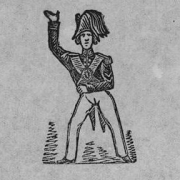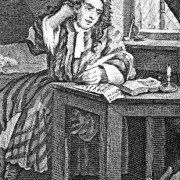MONTHLY BLOG 47, WOMEN AND PUBLIC SPEAKING – AND WHY IT HAS TAKEN SO LONG TO GET THERE
If citing, please kindly acknowledge copyright © Penelope J. Corfield (2014)
It really wasn’t done – for centuries. Women, respectable women especially, did not speak in public from public platforms. They do sometimes, anachronistically, in period films. So the script-writer of The Duchess (dir: Sam Dibb, 2008) decided that the famous eighteenth-century Duchess of Devonshire (played by Keira Knightley) should indicate her political commitment to the Whig reform cause by speaking at the public hustings for the 1784 Westminster election.
But the scene is a flat pancake. That’s no doubt partly because it never happened, giving the script-writer no historical documentation from which to work. The film is good at revealing the extent to which, as an aristocratic woman in the public eye, the Duchess is constrained by her social position. And then suddenly, she appears on a public balcony in her furs and feathers, delivering an impassioned election speech in favour of democracy to the London masses. There’s no sensation. No shock. There’s not even an angry husband, ordering her to desist. [See Fig.1a]
However, the script-writer knows, from evidence discussed in other scenes, that the Duchess was heavily satirised for her political affiliations. In 1784 she undertook the much milder action of canvassing in the Westminster constituency. She was young, charming, rich, high-ranking and a leader of fashion. Yet even she could not get away with it. She was socially pilloried in graphic prints which accused her of lewdly selling kisses to brutish plebeians for votes (see Fig.1b). Not only did the Duchess never venture publicly into politics again, but nor did other high-born ladies. They stuck to behind-the-scenes roles as political hostesses – not without influence, but not in the censorious public eye.

The reasons for this self-effacement were deeply rooted in Christian tradition. Women were seen as domestic helpmeets. They were expected to be modest, docile and, in public, silent. After all, St Paul enjoined that: ‘Let your women keep silence in the churches; for it is not permitted unto them to speak. But they are commanded to be under obedience … And if they will learn anything, let them ask their husbands at home.’1 And he further explained: ‘I suffer not a woman to teach, nor to usurp authority over the man, but to be in silence. For Adam was first formed, then Eve.’2 Christian feminist scholars today debate about St Paul’s own personal attitudes. But the point was not so much his original intention but the meanings internalised by his followers over time. Women, formed from ‘Adam’s rib’, were subordinate beings. Like children, they should be ‘seen but not heard’.
This social convention began to dissipate only slowly in the later nineteenth century, with the campaign for the female franchise. As a result, it is hard to find any major speeches by a British woman on a public platform (especially an outdoor public platform), before the twentieth century. Queen Elizabeth’s speech to her troops at Tilbury docks (August 1588) is the one great exception; and that famous event was legitimated not just by her royal status but by fears of imminent invasion at the time of the Armada.
Of course, there were daring women who did sometimes break with convention. Particularly in times of social tension and political upheaval, there was greater scope for direct action. It was not uncommon for women preachers, often from lower-class backgrounds, to emerge in radical religious movements, such as in the 1640s. If the spirit moved someone to ‘bear witness’, a sincere belief in divine calling could override the Pauline proscription. So early Methodism, which stressed the teachings of the heart, saw many women lay preachers playing an independent role in the 1780s and 1790s.3 One of them was Elizabeth Tomlinson. She became aunt by marriage to the novelist George Eliot, who later drew a highly sympathetic pen-portrait of a Methodist female evangelist in the form of Dinah Morris in Adam Bede (1859). However, the novel ends with Dinah’s withdrawal from public preaching. And the same happened in many real-life cases as nineteenth-century Methodism became more institutionalised and conservative.4
Nonetheless, radical religion and politics remained possible outlets for women speakers. John Wesley himself had expressed the view that treating women only as ‘agreeable playthings’ constituted ‘the deepest unkindness … horrid cruelty … mere Turkish barbarity’.5 By the later nineteenth century, with the spread of literacy and further education, increasing numbers of women began to reject the subordinate role. It was still notable, however that a number of doughty feminists in the early days of the suffragette campaigns continued to express trepidation at speaking on public platforms. One who had no qualms was Charlotte Despard, shown in Fig.2 addressing a mass meeting in Trafalgar Square. She was, however, an exceptional person, emboldened not only by her Anglo-Irish upper-crust background but also, by the 1930s, by her venerable age, doughty personality and long political experience.6
 One reason for the continuing trepidation was because the art of public speaking does not depend solely on the nerve of the speaker. Successful oratory depends upon an unstated but very real reciprocity. The audience has to be prepared to listen and to respond. If those present are unwilling, then the result can be anything from hostile shouting, jeers, catcalls, obscenities, the throwing of missiles – or simply turning away. Social conventions, in other words, are policed not so much by law (though it may contribute) but by widely-shared conventional beliefs.
One reason for the continuing trepidation was because the art of public speaking does not depend solely on the nerve of the speaker. Successful oratory depends upon an unstated but very real reciprocity. The audience has to be prepared to listen and to respond. If those present are unwilling, then the result can be anything from hostile shouting, jeers, catcalls, obscenities, the throwing of missiles – or simply turning away. Social conventions, in other words, are policed not so much by law (though it may contribute) but by widely-shared conventional beliefs.
Before the twentieth century, the only example known to me of a real-life young woman who spoke publicly at a political rally occurred at the Norwich Guildhall in 1794. The orator was Amelia Alderson (later Opie), the daughter of a respected local physician and a social star among the radical intelligentsia. Her speech was reported in a private letter by a disapproving (if reluctantly admiring) older female witness, Sarah Scott.7 She herself was the author of Millennium Hall (1762), which advocated an elegant female-only community as a means of helping women to escape from domestic subordination. But even a proto-feminist like Scott disapproved of Alderson’s actions. Hence getting both men and women to accept female public speaking remains essential to achieve equality on the soap-box – and (a long-running good cause still not fully resolved today) in the pulpit. Down with biblical literalism! Speak up, everyone, and listen too!
1 Holy Bible, St Paul 1 Corinthians, 14: 34-35.
2 Holy Bible, 1 Timothy, 2: 12-13.
3 See D. Valenze, Prophetic Sons and Daughters: Female Preaching and Popular Religion in Industrial England (Princeton, 1985).
4 P.J. Corfield, Power and the Professions in Britain, 1700-1850 (1995), pp. 105-8.
5 See John Wesley’s Sermon 98: On Visiting the Sick (1786), sect. III, 7: ‘There is neither male nor female in Christ Jesus’: in www.umcmission.org/Find-Resources/John-Wesley-Sermons/Sermon-98-On-Visiting-the-Sick
6 For Charlotte Despard, née French (1844-1939), see M. Mulvihill, Charlotte Despard: A Biography (1989).
7 J. Spencer, ‘Introduction’, in Sarah Scott, Millennium Hall (1762), ed. J. Spencer (1986), pp. ix-x, citing R. Blunt (ed.), Mrs Montagu, ‘Queen of the Blues’: Her Letters and Friendships from 1762 to 1800 (1923), Vol. 2, p. 304.
For further discussion, see Twitter
To read other discussion-points, please click here
To download Monthly Blog 47 please click here








